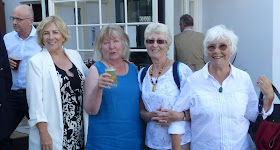Dense medium separation (DMS) has two principal applications: the preconcentration of minerals, that is the rejection of gangue prior to grinding for final liberation, and in coal preparation to produce a commercially graded end-product, clean coal being separated from the heavier shale or high-ash coal.
In principle, it is the simplest of all gravity processes and has long been a standard laboratory method for separating minerals of different specific gravity. Heavy liquids of suitable density are used, so that those minerals lighter than the liquid float, while those heavier sink. Since most heavy liquids are expensive or toxic, the dense medium used in industrial separations is a suspension in water of particles of some dense solid, ferrosilicon for metalliferous ores and magnetite for coal.
The process offers some advantages over other gravity processes. It has the ability to make sharp separations at any required density, with a high degree of efficiency, even in the presence of high percentages of near-density material. The density of separation can be closely controlled, and can be maintained under normal conditions for indefinite periods. The separating density can be changed as required and fairly quickly, to meet varying requirements.
Preconcentration is most often performed on metalliferous ores that are associated with relatively light country rock, such as silicates and carbonates. Lead-zinc (galena-sphalerite) ores are often pre-concentrated by DMS and it was commonly used with some of the Cornish tin ores, the cassiterite being found in lodes with some degree of banded structure, associated with other high-specific-gravity minerals such as the sulfides of iron, arsenic, and copper, as well as iron oxides. The lode fragments containing these minerals therefore have a greater density than the siliceous waste and allow early separation.
 |
| Typical DMS circuit |
The process is, however, rather expensive, mainly due to the ancillary equipment needed to clean and recycle the medium, and the cost of the medium itself, and a viable alternative is electronic ore sorting, which is increasingly being used in the mining sector in order to reduce the amount of waste processed through the comminution circuit thus boosting the overall ore grade.
Last week it was reported that two tin operations are planning to use ore sorters as their method of preconcentration.
Metals X and its joint venture partner
Yunnan Tin have commenced commissioning of its new crushing and ore sorting facility at the
Renison tin mine in Tasmania, Australia (
MEI Online). The ore sorting equipment, provided by TOMRA, is expected to increase annual tin production at Renison by 15-20%, the
TOMRA X-Ray transmission ore sorter expected to reject an estimated 200,000 t/y of waste at the crushing stage, upgrading the ore before the processing plant.
Also reported on
MEI Online, the results of the definitive feasibility study on
Kasbah Resources’ majority owned
Achmmach tin project in Morocco have proven favourable enough for management to push forward into development, and it looks like being another operation to benefit from ore sorting technology. The plan has the ore sorter reject rate kept nominally to 40% of new feed, which will mean the positively sorted ore from the sorter, termed the “accepts”, will report to the downstream processing circuits. The company has carried out two phases of ore sorting testwork on the project, with the second phase involving sorting two tonnes of representative ore through a full size
Steinert KSS multi-sensor ore sorting machine in Perth, Western Australia.
This could be great news for Cornwall, with the South Crofty tin mine revival under way. Up to its closure in 1998 South Crofty had used DMS to pre-concentrate the ore, as did the Geevor tin mine which closed eight years earlier. It will be interesting to see if electronic ore sorting is considered for the new processing circuit at South Crofty, and hopefully we may find out more at
Physical Separation '19 next year. Both
TOMRA and
Steinert, the leading players in sorting technology, were major sponsors of
Physical Separation '17, and I am sure they will be at next year's event with updates on this increasingly important technology.













































